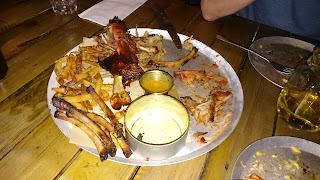It was the surreal name which first attracted me to French /Swiss animation My Life as a Courgette, when it previewed at the Derby Film Festival in May 2017. It seemed fitting to write about a food monikered film for my first foray into movie reviews. Courgette is Swiss director Claude Barras’s feature length debut and it has been on general release since 2 June 2017.
The narrative
is pretty grim; based on a novel by Gilles Paris, this is not a children’s film
but a film about being a forgotten child.
We first meet nine year old Icare, nick-named Courgette by his alcoholic
mother, whilst he is building a tower from empty beer cans in his bedroom. From his window he flies a colourful paper
kite, illustrated with a picture of his absent superhero father on one side,
and a fluffy yellow chick on the other.
His dad, Courgette tells a policeman later, really liked chicks. This gentle humour in the face of disturbing
reality sets the tone of the film. Despite
his circumstances Courgette appears childishly innocent, delighting in his solitary
games and decorating his garret with colourful graffiti.
Later,
Courgette meets more children like him, with, as bully Simon puts it, ‘no-one
left to love us’. Small details cleverly highlight the sadness
in the children’s lives, for example Courgette keeps an empty beer can as a sad
memento of his mother whilst it is tragically clear that Simon’s bullying
bravado is a desperate defence mechanism.
The claymation
is cartoonish, yet painstaking attention to detail in the mis en scène adds
grit and realism, for example the graffiti on the walls outside the children’s
home. The huge heads and large eyes of
the characters allow nuanced emotions to show on their faces, so that they
appear almost excruciatingly human.
Music is used
to great effect, in one of my favourite scenes the children dance jerkily under
a mirror ball to Swiss 80’s band Grauzone’s track Eisbaer, which I’ve been
listening to on repeat since seeing the film.
Despite the
dark subject matter, Courgette is
remarkably uplifting, celebrating the children’s’ resilience and ability to
retain their innocence. It reminded me
of the 2009 Australian claymation Mary and Max, with similarly quirky
animation, and gallons of humour and pathos.
For the neglected, abused and marginalised characters, kindness and
friendship offer hope and salvation and if the film has a message, it is that no
matter what you have been through it is still possible to laugh and to enjoy
the small pleasures in life.


















